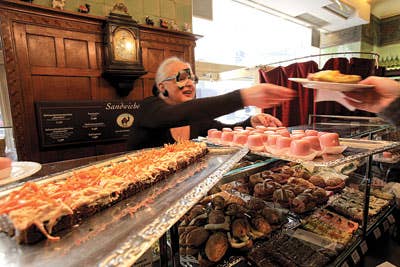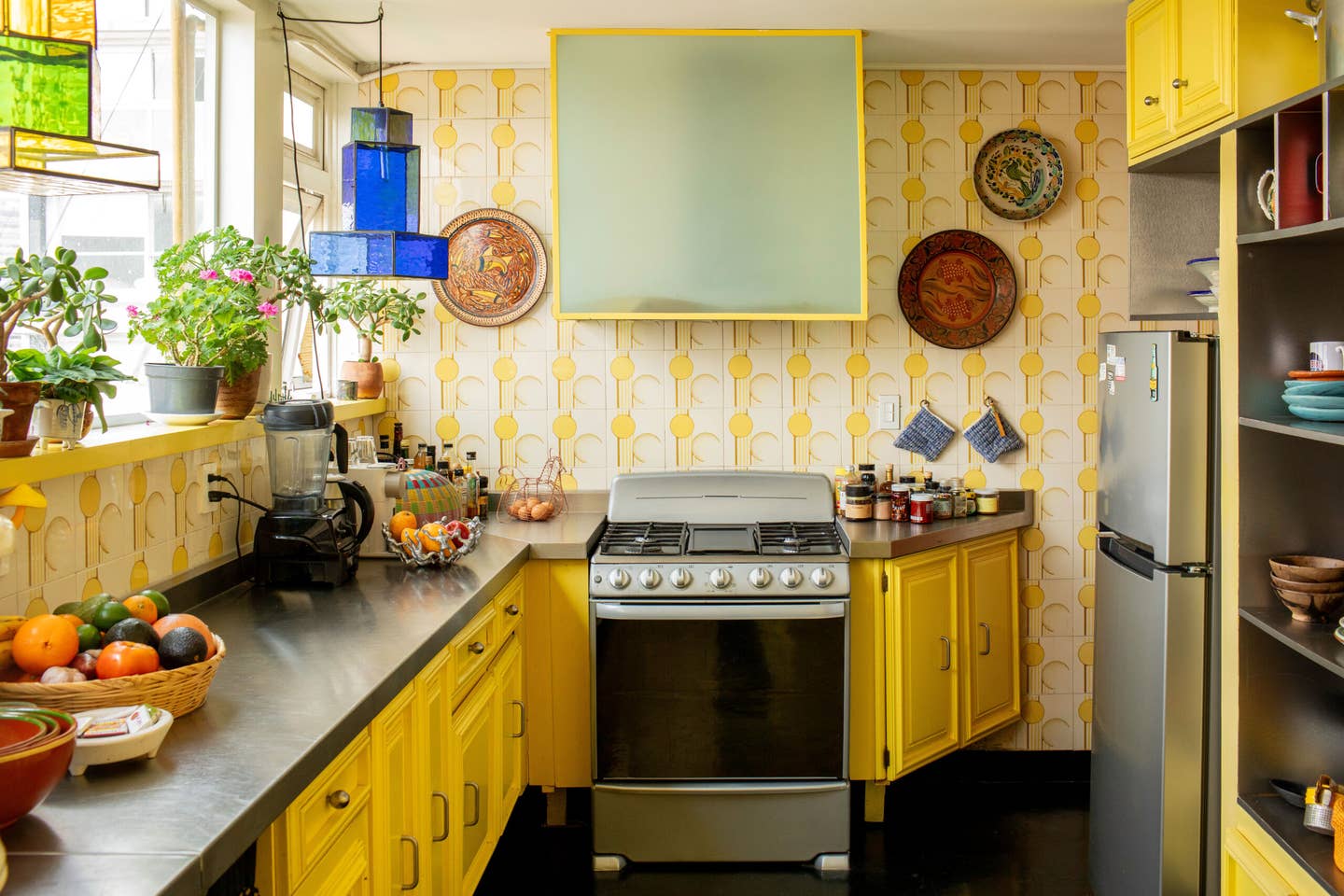
Vienna Interlude: Inside One Of Vienna’s Oldest Sandwich Shops
The glories of an empire, served up as a canape
On a sunny Saturday morning, the colorful trays of open-face sandwiches on display at Vienna's Zum Schwarzen Kameel read like a map of the Austro-Hungarian Empire. Lined up alongside Austrian Beinschinken (boiled ham with freshly grated horseradish) on black bread are canapes topped with Hungarian salami, and cream cheese tinted orange by paprika. Here too are Croatian anchovies, tiny Adriatic shrimp, and roast beef with artichokes. The Hapsburg crown once reigned over some 20 European countries, nearly all of them represented here in edible form; in Austria, as in much of the rest of Central Europe, the Baltics, and Scandinavia, the two-slice Anglo-Saxon sandwich has never displaced the elegant open-face style.
Loden-clad men and ladies in minks gather in the bar-deli—an exhibit of Jugendstil mahogany paneling and glazed terra-cotta tile—and scrutinize the daily spread before placing their order. "Gruß Gott [Greetings]!" says a man in a suit to almost every arriving customer, which he then follows with a bit of chat. He seems to know them all. In fact, I'd wager that few people in Vienna have a more encyclopedic social knowledge of the city than owner-manager Peter Friese, whose family has been running this institution for more than two centuries. Opened by Johan Baptist Cameel, in 1618, as a shop selling exotic foods and spices, it was acquired two centuries later by Friese's ancestor Joseph Stiebitz, who added a wine tavern. The shop instantly became one of the most popular in Vienna, attracting aristocrats seeking relief from stiff Hapsburg protocol, as well as artists and musicians, including Ludwig van Beethoven.
Just beyond the bar is an intimate dining room that serves an excellent schnitzel, but at Zum Schwarzen Kameel, the real fun lies in the people watching, the eavesdropping, the sandwiches in the bar (above, Erna Lenhardt plates a few during lunch service), and the terrific assortment of wines by the glass, including my favorite pairing for a plate of sandwiches, the fruity, straw-color Gelber Muskateller. During a visit last fall, a Viennese matron with carefully coiffed meringue-color hair looked over appraisingly from the table next to mine when I received my quartet: curried egg and chive, salmon, Beinschinken, and salami made with Mangalitsa pork. "Ah, very well done," she said. "You want a variety of tastes and textures." She also allowed that she appreciates the fact that Zum Schwarzen Kameel offers a number of sandwiches made without mayonnaise—an advantage, in her opinion, because one can eat them without removing one's gloves. In Vienna, there's a right way and a wrong way of doing everything. —Alexander Lobrano, author of Hungry for Paris (Random House, 2010)
Keep Reading
Continue to Next Story










